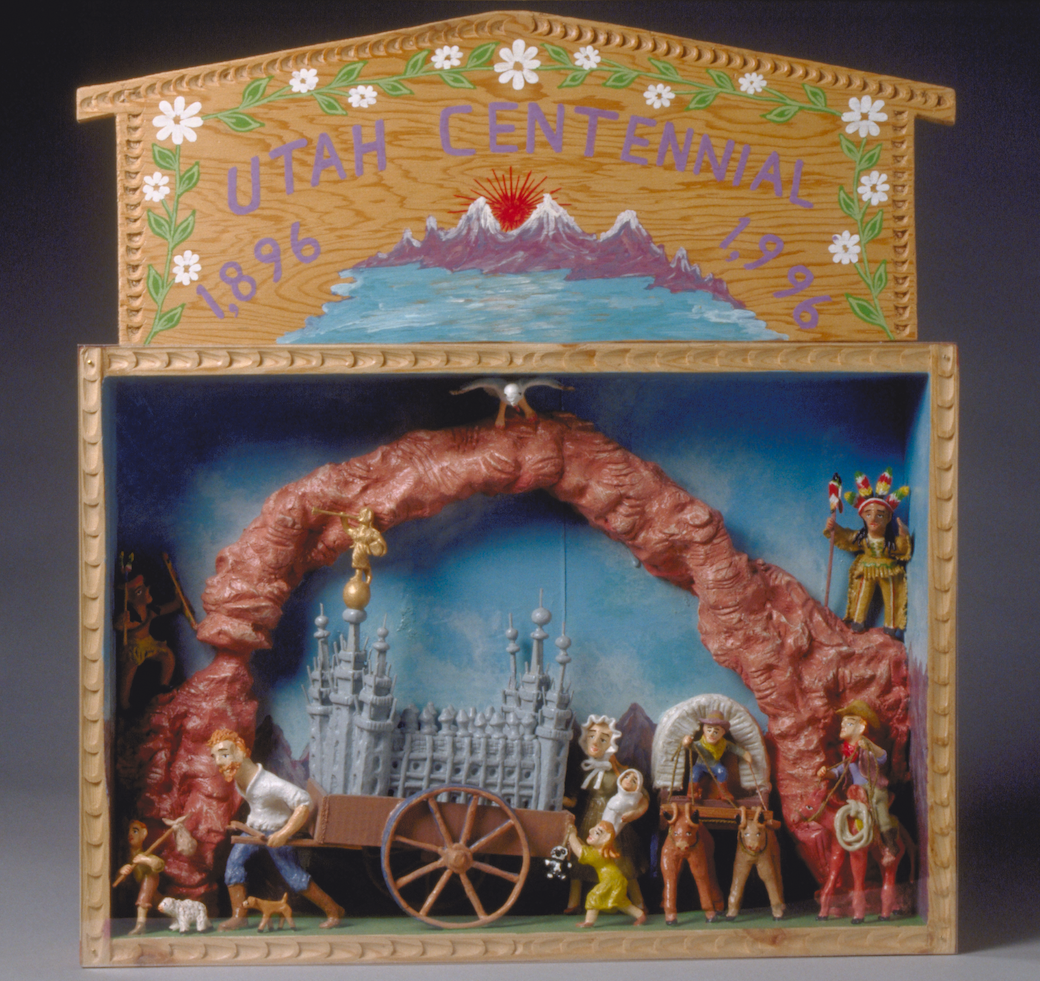The landscape of the United States is cluttered with histories interpreted through personal perceptions. This complex combination is represented in this painting of North America topped with South America. Credit: “Umber America” by George Mark England. Courtesy of the Utah Division of Arts & Museums. All Rights Reserved.
Voices: Discord and Harmony in 1896
The most familiar notes of the Utah statehood story are a settlers’ story, which most listeners might consider a harmonious melody about a rag-tag bunch of outcast religious pioneers who left the United States of America to settle in a Mexican territory by a salty lake. Members of the young Church of Jesus Christ of Latter-day Saints, an industrious people, worked hard to fulfill Biblical promises to make the dessert “blossom as a rose.”
Yet that’s only one melody in this western state’s fascinating historic symphony. As Utah celebrates its 125th anniversary, other chords reveal an even more complicated and dissonant history of the people who helped shape Utah into a state.
A retablo scene in a box commemorating the centennial arrival of Latter-day Saint members to the Salt Lake Valley, 1896-1996. The scene depicts the traditional settler coming by wagon or handcart surrounded by what was already here: the landscape, animals, and Indigenous peoples.
Credit: “Utah Centennial 1996 Retablo” by Jeronimo Lozano. Courtesy of the Utah Division of Arts & Museums. All Rights Reserved.

Themes and variations
How the short, remarkable history of Iosepa, the Polynesian colony of Latter-day Saints in Utah’s west desert, anchors thriving contemporary communities